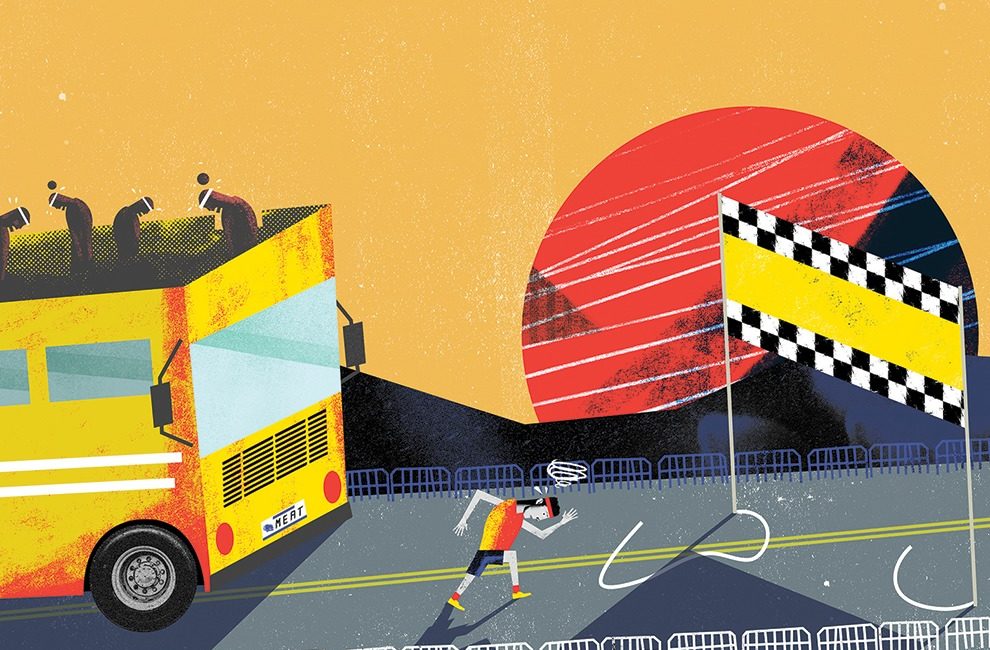The Hoosierist: The Longest Mile

Illustration by Nate Kitch
Q: What’s the longest time you can take to finish the Mini-Marathon?
A: Planners give slowpokes nearly four hours to complete the 13.1-mile course, which works out to 18 minutes per mile—comparable to a speed-walking senior at Castleton Square Mall. But there’s a way to game the system. Runners are divided into groups based on speed, with the fastest starting first and the slowest going last. Since the clock for each group doesn’t start until the last person in that faction crosses the starting line, those at the front get an extra few minutes to complete the race. “In theory, someone might finish slower than the minimum pace,” says 500 Festival vice president Sabrina List. But that’s not the only reason to avoid the back. If you’re tail-end Charlie, the only thing behind you is a bus that picks up folks who run out of steam. The Mini folks charitably call it the “back-of-the-pack bus,” but The Hoosierist prefers its unofficial title: the meat wagon.
Q: I hear something called the P-47 Thunderbolt is the state aircraft of Indiana. What’s a “Thunderbolt,” and why do we have a state aircraft?
A: The P-47 was a World War II fighter that’s rightly famous for shooting down thousands of enemy aircraft and pummeling large portions of Nazi-occupied Europe into coarse, smoke-scented gravel. But down in Evansville, it’s known as the fighter that saved the town. The Great Depression almost crushed the life out of the place, but in 1942, Republic Aviation opened a massive P-47 factory, creating thousands of jobs and drawing dozens of subcontractor facilities. Though the factory stopped cranking out Thunderbolts in 1945, the town was able to ride the manufacturing boom for decades. The big, hulking fighter wasn’t exactly easy on the eyes, but to the roughly 5,000 workers who drew paychecks building them, it was a thing of beauty.
Q: Which Indianapolis Zoo animal is the biggest handful to care for?
A: While one might assume that apex predators such as tigers generate the most headaches, the Zoo staff insists the title of Biggest Troublemaker goes to its smallest charges—the butterflies in the Hilbert Conservatory. “It’s actually a bigger process to obtain and care for them than it is to transport, say, a giraffe,” says the Zoo’s senior manager of public relations, Judy Palermo. A big predator could certainly cause short-term mayhem if it escaped, but the butterflies, imported from around the world, could upset our entire ecosystem. And they get out very easily. That’s why the conservatory can only be accessed by double-doored “airlocks,” which allow staffers to carefully inspect their clothes for stowaways before going outside.
Have Indiana-related questions? Send them to hoosierist@IndianapolisMonthly.com.





